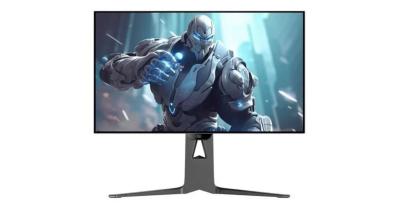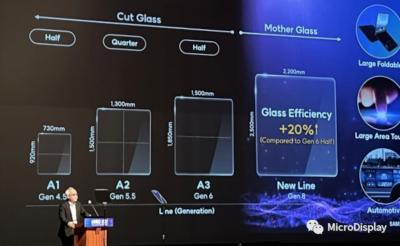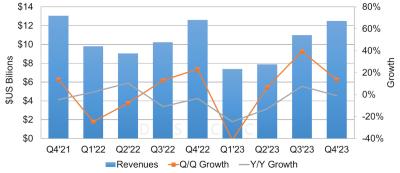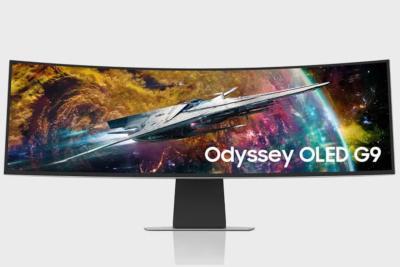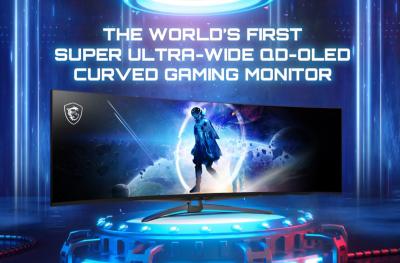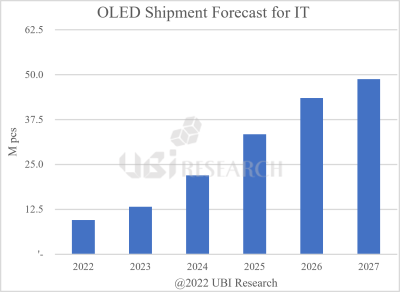OLED (Organic Light Emitting Diode) technology offers bright, efficient and fast displays, outperforming LCD display. OLEDs deliver the best picture quality ever and are used in many devices, from smartwatches through smartphones and tablets to TVs and more.
OLEDs are also used to enable high-end monitors that offer excellent contrast, image quality, colors and new form factors. This article will explain the benefits, the current status and the future of OLED monitors.
OLED monitors vs LCD monitors
- OLED provide a better image quality with a much higher contrast (true blacks), wide color gamut, better viewing angles and a much faster refresh rate (great for gaming!)
- OLED panels are much thinner and lighter compared to LCD panels
- OLED monitors consume less power - as only lit pixels draw energy on OLED displays
- An OLED monitor can be flexible, bendable, rollable - and transparent
OLED monitors and the burn-in challenge?
Of course OLED technology is not perfect. One of the major drawbacks of an OLED display is image retention / burn-in. In an OLED display each pixel is driven independently and each pixel ages differently - and as brightness is reduced with use (the lifetime of OLED materials is limited), we have burn-in problems.
For mobile phones and TVs this is less of a problem - but in a computer user interface many UI elements are quite fixed (toolbars, icons, etc) which means that burn-in is a real problem. There are some technologies to handle this problem - for example by measurement and compensation, or by adopting a tandem architecture to increase the lifetime. In addition user-interface designers can design a user interface that will be more suited for OLED displays.
OLED monitors on the market
OLED technology is very popular in smartphones, wearables and TVs - and in recent years OLED monitors has entered the market as display makers now target this market, starting with high-end models aimed towards gaming and content creation.
Display makers LG Display, Samsung Display and others target premium applications and mostly produce OLED panels in the range of 27-inch to 42-inch. One example of an OLED monitor is the ViewSonic VX2776-2K-OLED, based on a 26.5" 1000 nits (HDR) 2560x1440 240Hz 0.03 ms G2G VRR WOLED display (made by LGD).
Asus has several OLED monitors. The PG32UCDM and PG34WCDM are two gaming monitors, each based on a different OLED panel technology. The PG32UCDM uses a 32" 4K (3840x2160, 16:9) 240Hz VRR 1000 nits (HDR peak) QD-OLED panel, produced by Samsung Display. The PG34WCDM monitor, on the other hand is based on a 34" 3440x1440 (21:9) 240Hz VRR 1300 nits (HDR peak) MLA (microlens) WOLED curved (800R) panel, produced by LG Display.
Samsung has its own high-end OLED monitor, the Odyssey OLED G95SC. This is an ultra-wide gaming monitor based on a 49-inch 5120x1440 resolution, 240Hz, 1800R curved QD-OLED panel. The G95SC is now shipping, for around $2,000. LG also offers OLED monitors, including the UltraGear 27GR95QE-B a gaming monitor with a 27" 2560x1440 240Hz 0.3ms (GtG) response time OLED display. The 27" UltraGear OLED monitor is now shipping for around $850.
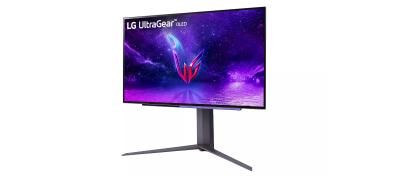
Click here for our comprehensive list of OLED monitors.
Further reading
Samsung Display to invest $3.1 billion to convert an LCD fab to an IT 8.5-Gen AMOLED line
In August 2022, Samsung Display announced that the company decided to build a 8-Gen (2200x2500 mm) production line, which will begin production in 2024. The company now updated that it will convert an existing LCD line in Asan, South Chungcheong province, Korea - and the total cost of the project is $3.1 billion. Samsung Display received government subsidy for this project.
Samsung says that the new production line will enable it to more than double its AMOLED tablet panel production. The company acknowledges the drop in demand for displays in general, but the company expects that demand for premium mid-sized panels will keep increasing.
DSCC: OLED revenues to decline 7% in 2023, due to low demand for TV and smartphone panels
DSCC estimates that the OLED market will contract 7% in 2023, by revenues, to reach $38.7 billion. In terms of shipments, there will be a 1% decline from last year.
The two main OLED markets, smartphones and TVs, will both decline - OLED smartphone revenues will decline by 8% in 2023 (shipments will remain the same), while OLED TV panel revenues will drop 15% (12% by shipments).
LG Displays adopts its MLA technology to its new gaming monitors
Last month LG Display announced its META technology, which is a micro-lens array (MLA) that increases OLED brightness by around 60% and viewing angles by 30%. The MLA technology was first adopted in LG's high-end TV panels.

According to reports from Korea, LGD is now applying MLA to its gaming monitors, as it sees the growing gaming market as an important one for its future growth.
Samsung to start producing 49-inch and 77-inch QD-OLED panels
Samsung announced that it is set to start producing several new QD-OLED panels and products in 2023. In addition to the current 34-inch, 55-inch and 65-inch panels, it will also offer a 49-inch 240Hz ultra-wide 5120x1440 QD-OLED for gaming monitors, and a 77-inch TV panel.
Samsung will adopt the new 49-inch ultra-wide QD-OLED panel in its upcoming Odyssey OLED G9 monitor. We already knew Samsung has finished developing this panel back in November when MSI unveiled their own QD-OLED monitor project. The 77-inch panel was also unveiled before.
LGD starts producing 27" and 45" 240Hz WOLED panels for gaming monitors
LG Display announced that it is starting to produce 27" and 45" 240Hz WOLED panels, optimized for gaming applications. The 45" panel is an ultra-wide 3440x1440 (WQHD) curved one.
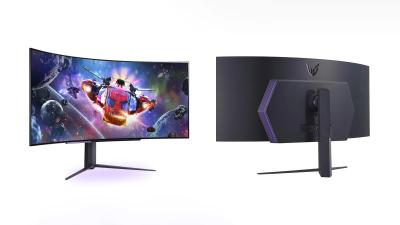
LG Electronics already unveiled monitors based on these panels last month, the Ultragear 27GR95QE-B and 45GR95QE. LGE did not say when these monitors will ship, but it will likely happen soon if LGD is already producing the panels. Other companies, including Asus and Corsair have also developed monitors based on these panels.
MSI shows a 240Hz QD-OLED Monitor slated for early 2023
MSI unveiled an upcoming monitor, a QD-OLED super ultra-wide curved display, that will offer a 240Hz herz. MSI did not disclose anything else - beyond saying that the current name is Project 491C.
This is the first time we publicly hear of a 240Hz QD-OLED display. Samsung currently produces a single monitor QD-OLED panel, a 34-inch curved 175Hz 3440x1440 display.
UBI: Samsung Display to produce QD-OLED monitor panels at its upcoming 8.7-Gen A5 line, targeting Apple as its main customer
According to UBI Research, Samsung Display has decided to produce QD-OLED panels at its upcoming 8.7-Gen A5 production line. The company IT display strategy will be to produce QD-OLED panels for monitor application (27-inch displays, at first) and tandem RGB panels for smaller IT displays (tablets, laptops).
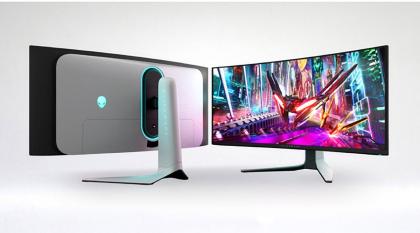
A 34-inch QD-OLED monitor (Dell Alienware)
Samsung is looking for design wins with Apple for both its display architectures - the larger QD-OLED panels for Apple's monitors and the smaller sized panels for its tablets.
UBI: the OLED for IT market is set to grow from 9.5 million units in 2022 to 48.8 million units in 2027
UBI Research estimates hat shipments of OLED panels for IT applications (tablets, monitors and laptops) will reach 48.8 million units by 2027, growing from around 9.5 million units in 2022 (a CAGR of 39%).
In 2022-2024, the main application for OLED panels is in laptops, but this will change from 2025 and onwards as tablets will also become a dominant applications (as Apple will start adoping OLEDs in its high-end iPads).
LG Display received a Perfect Black verification for its OLED TV and monitor displays from UL Solutions
LG Display announced that its OLED TV and monitor panels has been recognized as having a perfect black level in any environment, from UL Solutions. The company received the new verification for its panels ranging from 42-inch to 97-inch.

LGD says that it is the only company that has been recognized in this verification for TV and monitor panels.
LG Display to start producing mid-size WOLED panels as demand for TVs declines
According to reports, LG Display will start producing mid-sized W-OLED panels, as it is concerned that demand for TV panels is on the decline.

LGD will start producing 27-inch WOLED panels as early as by the end of October, targeting small TVs and gaming monitors. LGE will be LGD's first customer, and it plans to release its 27-inch OLED display in Q1 2023.
Pagination
- Previous page
- Page 4
- Next page
